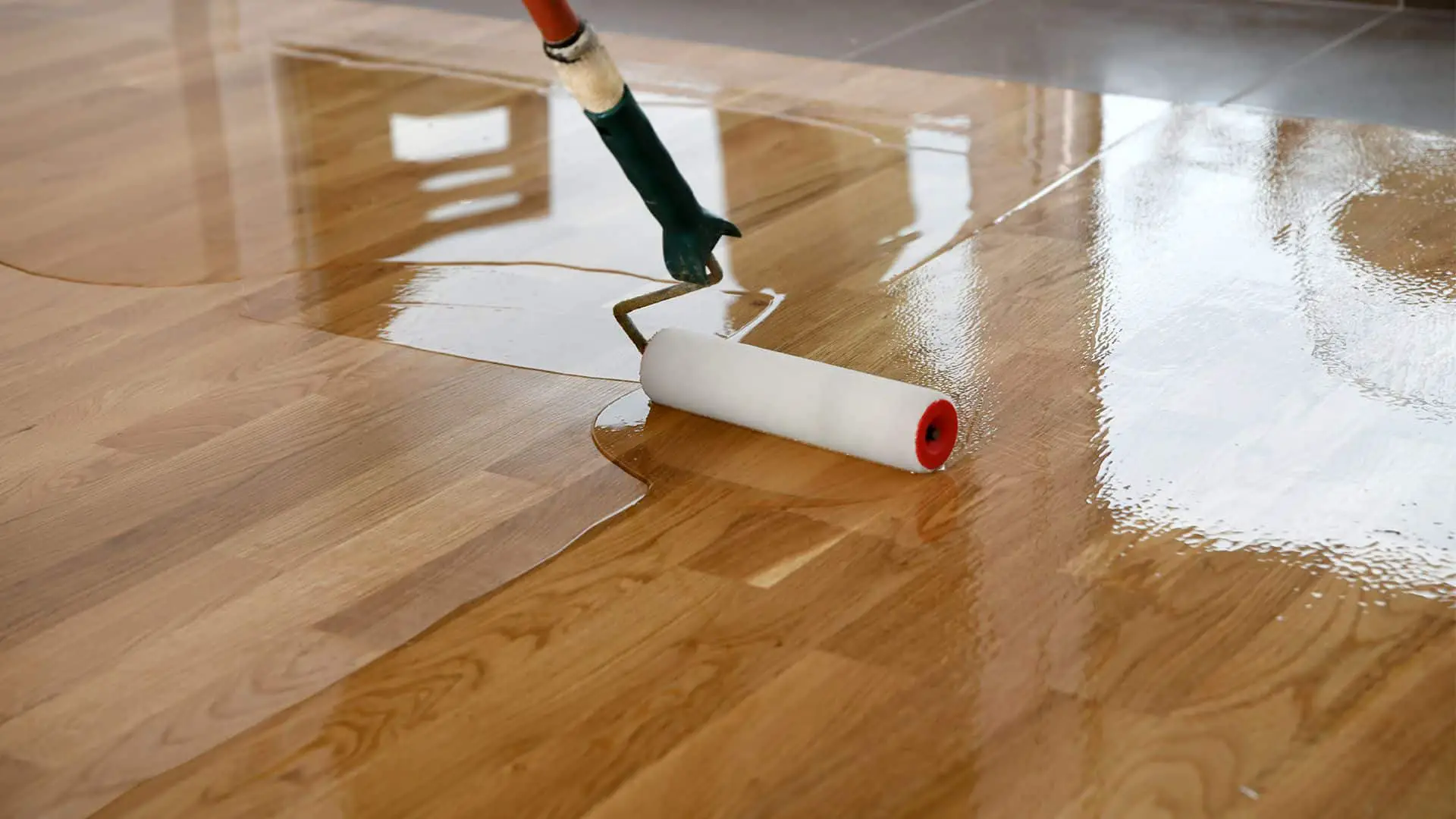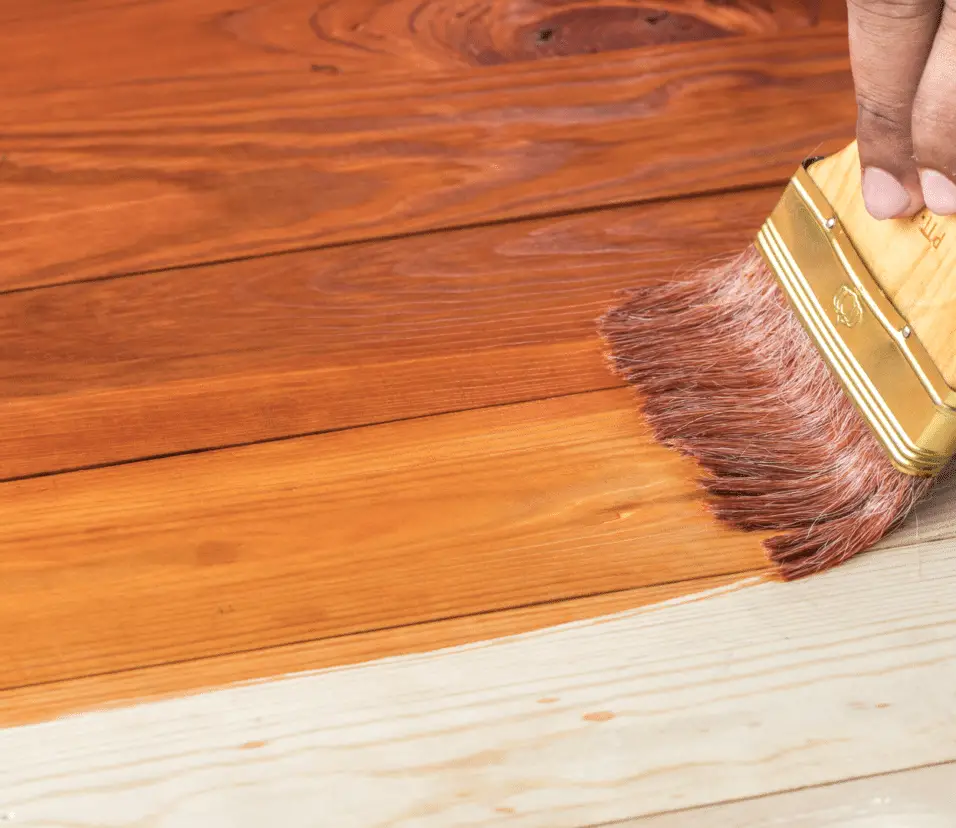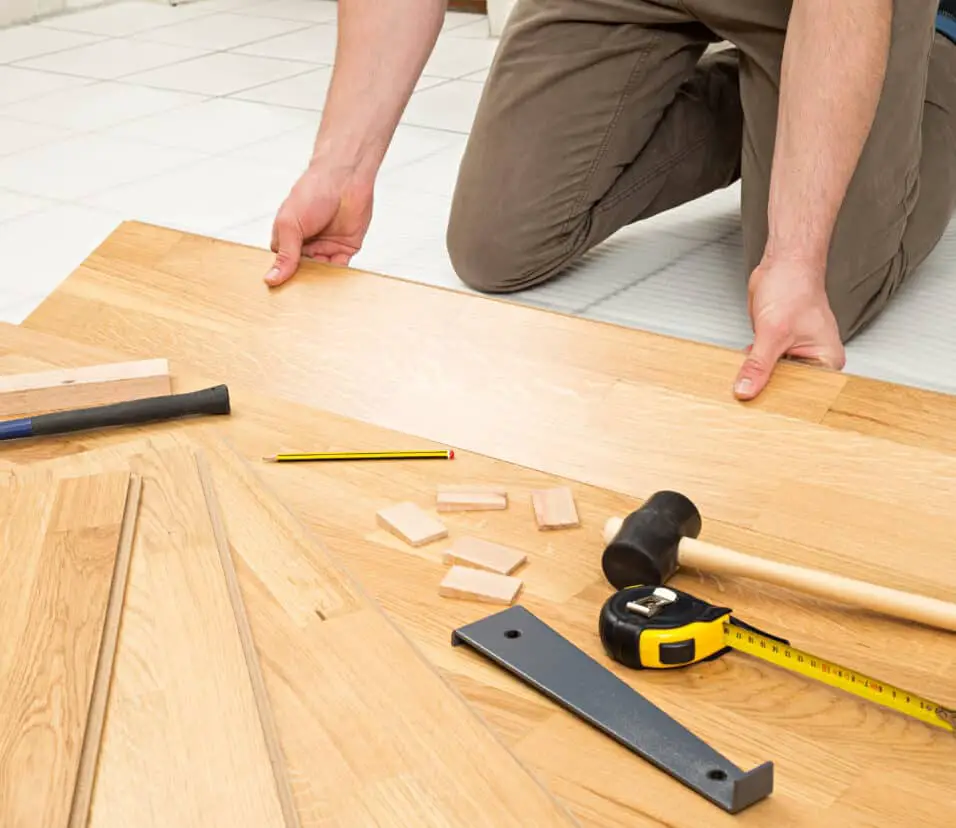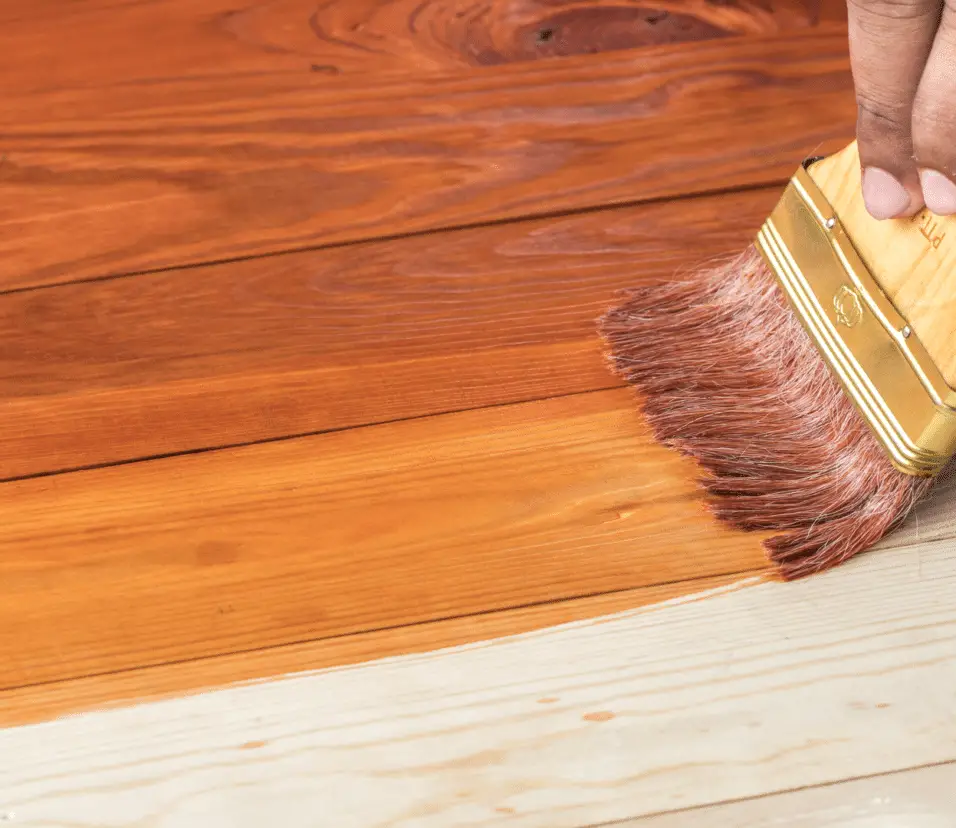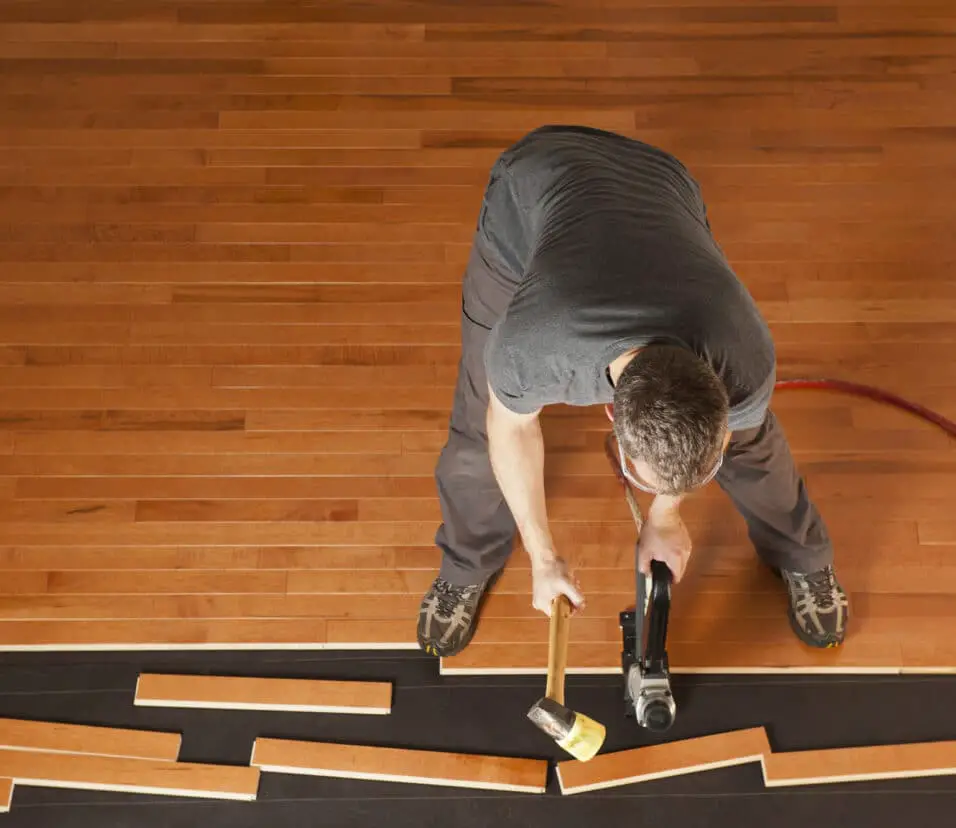How To Apply Polyurethane To Wood Floors
Introduction
How To Apply Polyurethane To Wood Floors: Applying polyurethane to wood floors is a crucial step in protecting and enhancing the beauty of the wood surface. Polyurethane is a durable and long-lasting finish that creates a protective layer. On the wood, guarding it against stains, scratches, and moisture. By following the proper steps and techniques. You can achieve a smooth and professional-looking finish that enhances the natural grain of the wood while providing excellent durability.
Before applying polyurethane to wood floors, it’s important to prepare the surface properly. Start by thoroughly cleaning the floor, removing any dust, dirt, or debris. Sanding the floor is typically necessary to create a smooth and even surface. Use a drum sander or a sanding block to gently sand the floor, following the grain of the wood. Gradually progress to finer grit sandpaper to achieve a smooth finish. Once the sanding is complete, thoroughly clean the floor again to remove any sanding dust.
Once the wood floor is properly prepared, it’s time to apply the polyurethane. Begin by stirring the polyurethane thoroughly to ensure an even consistency. It’s recommended to use a synthetic bristle brush or a lambswool applicator to apply the polyurethane. Start at one corner of the room and work your way towards an exit. Ensuring that you apply the polyurethane evenly and in the direction of the wood grain. Avoid applying too much polyurethane at once to prevent pooling and drips.
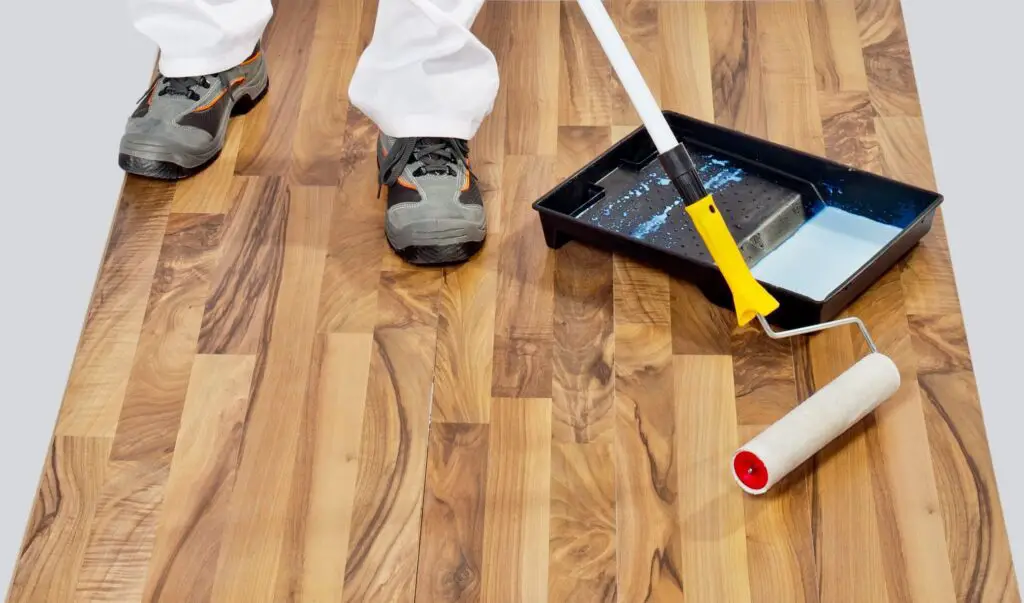
What is the best applicator for polyurethane on floors?
Many manufacturers recommend applying polyurethane to floors with lambswool applicators because it offers a smooth finish. Synthetic lambswool works with water-based poly but not with oil-based poly.
The best applicator for polyurethane on floors largely depends on the specific type of polyurethane being used and personal preferences. However, two common applicators stand out as effective choices: the brush and the roller.
Brush
Using a high-quality, natural bristle brush is an excellent option for applying polyurethane on floors. The brush allows for precise control over the application, ensuring even coverage and smooth finishes, especially in tight spaces and corners. Additionally, brushing helps to work the polyurethane into the wood grain, enhancing its durability and appearance.
Roller
A high-density foam roller is another popular choice for applying polyurethane on floors. Rollers are efficient for covering larger areas quickly and can produce a consistent finish. They are especially useful for applying polyurethane on large, flat surfaces, such as gymnasium floors or expansive hardwood areas.
In either case, it is essential to use long, smooth strokes in the direction of the wood grain. To minimize streaks and achieve a professional look. Before application, make sure the floor is clean, dry, and free of any dust or debris. Additionally, follow the manufacturer’s guidelines regarding the specific type of polyurethane being used. As certain products may require specific applicators for optimal results. Always conduct a test application on a small, inconspicuous area before proceeding with the full application.
How many coats of polyurethane on wood floors?
We recommend a minimum of 3 coats of water based polyurethane as it coats in thinner, but harder layers, than an oil based poly. Water based polyurethane dries very quickly and up to 4 coats can be applied in one day. Jobs 1,500 – 5,000 sq ft, 2-4 days for completion.
The number of coats of polyurethane required for wood floors depends on several factors, including the type and condition of the wood, the desired level of protection, and the manufacturer’s recommendations for the specific polyurethane product being used. In general, applying multiple coats of polyurethane is essential to achieve a durable and long-lasting finish.
For most wood floor projects, it is recommended to apply at least three coats of polyurethane. The initial coat serves as a sealer to fill the pores and create a smooth surface, while subsequent coats build up the protective layer. Each coat should be allowed to dry thoroughly before applying the next, typically taking anywhere from 4 to 24 hours, depending on the product and environmental conditions.
Some high-traffic areas or specific wood types may benefit from additional coats for added protection. However, applying too many coats without proper sanding between layers can lead to a thick and uneven finish. It’s crucial to follow the manufacturer’s guidelines and maintain proper sanding and drying times for optimal results.
Do you apply polyurethane with a brush or foam?
Water based polyurethane can be applied with a synthetic bristle brush, foam brush, rag (if it’s the wipe on type), or a spray on finish. My favorite tool to apply polyurethane (both oil and water based) is a foam brush because it’s very easy to use and leaves a beautiful finish!
When applying polyurethane, both brushes and foam applicators are commonly used, and the choice depends on the specific project and desired finish. A brush is a traditional and versatile tool for applying polyurethane to surfaces. It allows for precise control over the application, making it ideal for intricate work, edges, and corners. Brushes also come in different sizes and bristle types, catering to various projects.
On the other hand, foam applicators have gained popularity due to their ability to provide a smooth and even finish. They are often used for larger, flat surfaces like floors or tabletops. Foam applicators prevent visible brush marks and can speed up the application process, making them favored by some DIY enthusiasts and professionals alike.
The decision to use a brush or foam applicator can also be influenced by personal preference and comfort level. Some individuals may find brushes easier to handle, while others prefer the smoothness achieved by foam applicators.
How long does polyurethane last on wood floors?
between three to six years
Depending on many factors, like your lifestyle and type of finish, polyurethane can last between three to six years. However, if you see damage on your floors, it may be time to reapply a fresh finish to your hardwood.
Polyurethane is a popular and durable finish for wood floors, known for its ability to protect the surface and enhance the wood’s natural beauty. The lifespan of polyurethane on wood floors largely depends on factors such as the quality of the application, the level of foot traffic, and the maintenance routine.
On average, a well-applied polyurethane finish can last between 5 to 10 years on wood floors. However, this can vary. In high-traffic areas, the finish may wear down more quickly, while in low-traffic or well-maintained spaces, it could last longer. Proper care and maintenance are essential to extending the lifespan of the polyurethane finish.
To ensure the longevity of the polyurethane finish, regular cleaning with a soft broom or microfiber mop is recommended to remove debris and prevent scratches. Additionally, using rugs or mats in high-traffic areas can minimize wear and tear. Periodic reapplication of a new coat of polyurethane is also crucial to protect the wood and maintain its luster.
How long after polyurethane can you walk on floors?
Thus, it’s best to wait until all coats have been applied and dried before walking through the room. After that final coat, your floors should be off-limits for 24 hours. This is the only way to avoid any damage. Also, if you can swing it, hold off 3-7 days before moving furniture back into the room.
The time you should wait before walking on floors after applying polyurethane depends on several factors, such as the type of polyurethane used, environmental conditions, and the number of coats applied. Generally, water-based polyurethane dries faster than oil-based variants.
For water-based polyurethane, you can usually walk on the floors with caution after about 24 hours. However, it’s best to wait a full 48 hours before resuming normal foot traffic or moving furniture to ensure the finish has fully cured and hardened.
In the case of oil-based polyurethane, the drying time is longer. It typically takes around 48 hours for the floors to dry to the touch, but you should avoid walking on them for at least 72 hours. Heavy furniture and rugs should be kept off the floor for at least a week to allow the finish to fully cure and prevent any potential damage.
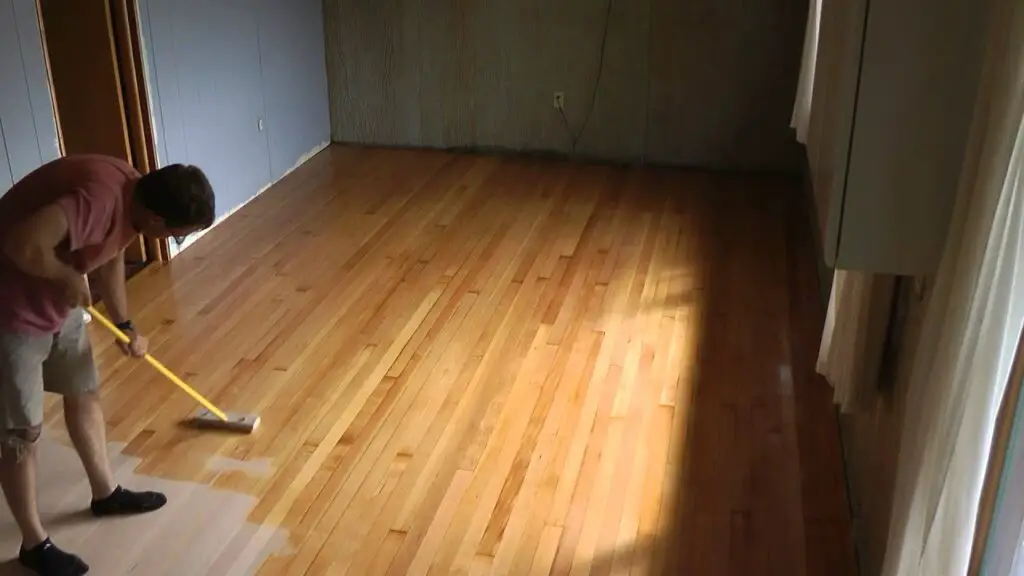
Can you just put polyurethane on wood floors?
Oil-Based. ZAR Interior Oil Base Poly is an ultrafast-drying, oil-based polyurethane that dries to a smooth finish on bare wood in just two hours and leaves no brush marks. It has a tough, abrasion-resistant finish and self-leveling properties, making it ideal for hardwood floors, cabinets, furniture and woodwork.
The time you should wait before walking on floors after applying polyurethane depends on several factors, such as the type of polyurethane used, environmental conditions, and the number of coats applied. Generally, water-based polyurethane dries faster than oil-based variants.
For water-based polyurethane, you can usually walk on the floors with caution after about 24 hours. However, it’s best to wait a full 48 hours before resuming normal foot traffic or moving furniture to ensure the finish has fully cured and hardened.
In the case of oil-based polyurethane, the drying time is longer. It typically takes around 48 hours for the floors to dry to the touch, but you should avoid walking on them for at least 72 hours. Heavy furniture and rugs should be kept off the floor for at least a week to allow the finish to fully cure and prevent any potential damage.
What is the maintenance of polyurethane floor?
Cleaning and Maintenance
Maintenance of your polyurethane-coated hardwood flooring should include regular dust mopping & damp mopping only; do not wet mop. We suggest using only steam mops, or damp mopping using distilled white vinegar, or glass cleaners heavily diluted with water to clean your flooring.
Maintaining a polyurethane floor is essential to preserve its appearance, durability, and longevity. Proper maintenance ensures that the floor continues to look beautiful and withstand daily wear and tear. Here are some key steps to maintain a polyurethane floor:
Regular Cleaning
Regularly sweep or vacuum the floor to remove dust, dirt, and debris. This prevents small particles from scratching the surface when people walk over them.
Mopping
Damp mop the floor using a mild detergent or a specialized polyurethane floor cleaner. Avoid using harsh chemicals or abrasive cleaners as they can damage the finish.
Spills and Stains
Wipe up spills immediately to prevent stains. If stains occur, use a soft cloth dampened with water or recommended cleaning products to gently clean the affected area.
Avoid Water Pools
Polyurethane floors are water-resistant, but prolonged exposure to standing water can still cause damage. Clean up water spills promptly and use mats or rugs in areas prone to moisture.
Protective Pads
Place protective pads on furniture legs to prevent scratches when moving items.
Regular Inspections
Periodically inspect the floor for any signs of wear, scratches, or damage. Address any issues promptly to prevent them from worsening.
Recoating
Over time, the polyurethane finish may wear down. If the floor looks dull or scratched, consider recoating it with a new layer of polyurethane to restore its shine and protection.
By following these maintenance practices, you can keep your polyurethane floor looking its best for years to come, enhancing the beauty and value of your space.
Does polyurethane make wood floors darker?
An oil based polyurethane will continue to amber and darken over time, while water-based poly will remain clear for the lifetime of the hardwood floor. This color difference is less noticeable over a stained hardwood floor, but an oil based poly will still exhibit an amber hue that will continue to darken over time.
Polyurethane is a popular and effective finish used to protect and enhance the appearance of wood floors. However, its impact on the color of the wood is not straightforward. When applied to bare wood, polyurethane can have a subtle darkening effect, although the extent of this darkening varies depending on the specific type of polyurethane used and the wood species.
Water-based polyurethane tends to have a lesser darkening effect compared to oil-based polyurethane, which may deepen the wood’s color slightly. Nevertheless, this darkening is generally considered minimal and barely noticeable, especially when dealing with lighter wood species. In some cases, the application of polyurethane can even enhance the natural beauty and grain patterns of the wood, giving it a richer and more vibrant appearance.
It’s crucial to keep in mind that the extent of darkening also depends on the number of coats applied. Each coat can add a slight hue, but professionals usually apply multiple thin coats to achieve the desired protective finish without significantly altering the wood’s color. In summary, while polyurethane may have a subtle darkening effect on wood floors, it is not a significant factor in changing the overall color of the wood.
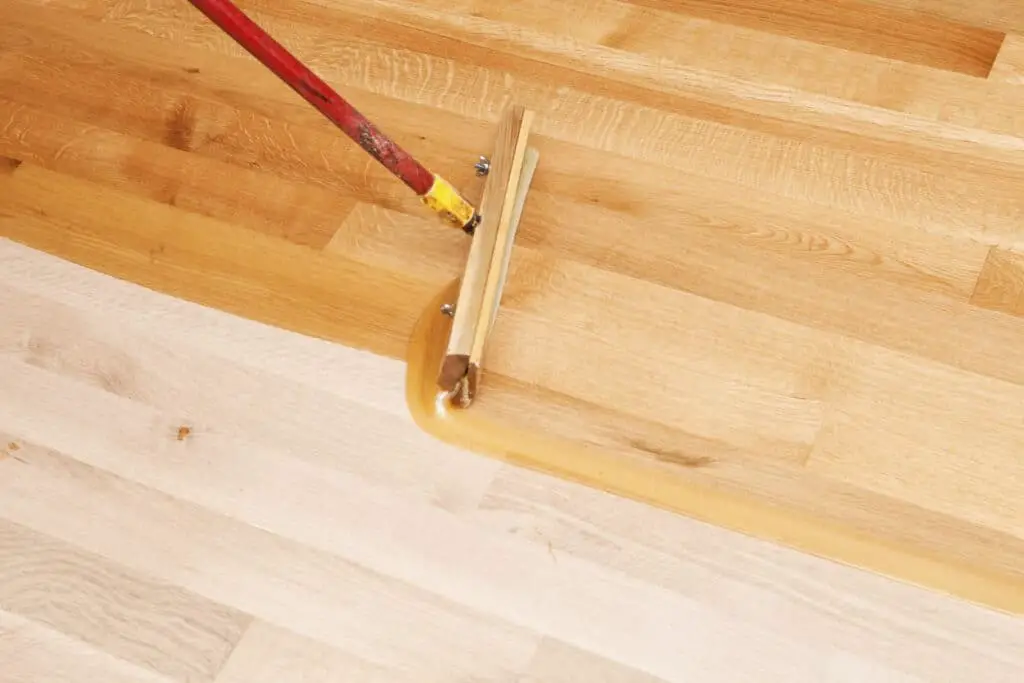
Conclusion
Applying polyurethane to wood floors is a rewarding process that not only enhances the natural beauty of the wood but also provides long-lasting protection. By following the proper steps, including surface preparation, even application, and multiple coats, you can achieve a professional-looking finish that withstands daily wear and tear.
The application of apply polyurethane requires careful attention to detail. Using the recommended tools, such as synthetic bristle brushes or lambswool applicators, helps achieve an even and smooth coat. It is important to follow the direction of the wood grain and avoid applying too much polyurethane at once to prevent pooling or drips.
Lastly, applying multiple coats of polyurethane is essential for maximum protection and durability. Each coat should be allowed to dry thoroughly before sanding and applying the next coat. This process builds up the protective layer and enhances the aesthetic appeal of the wood floor. By following these steps and being patient throughout the process, you can achieve a beautiful and long-lasting finish that will protect your wood floors for years to come.



